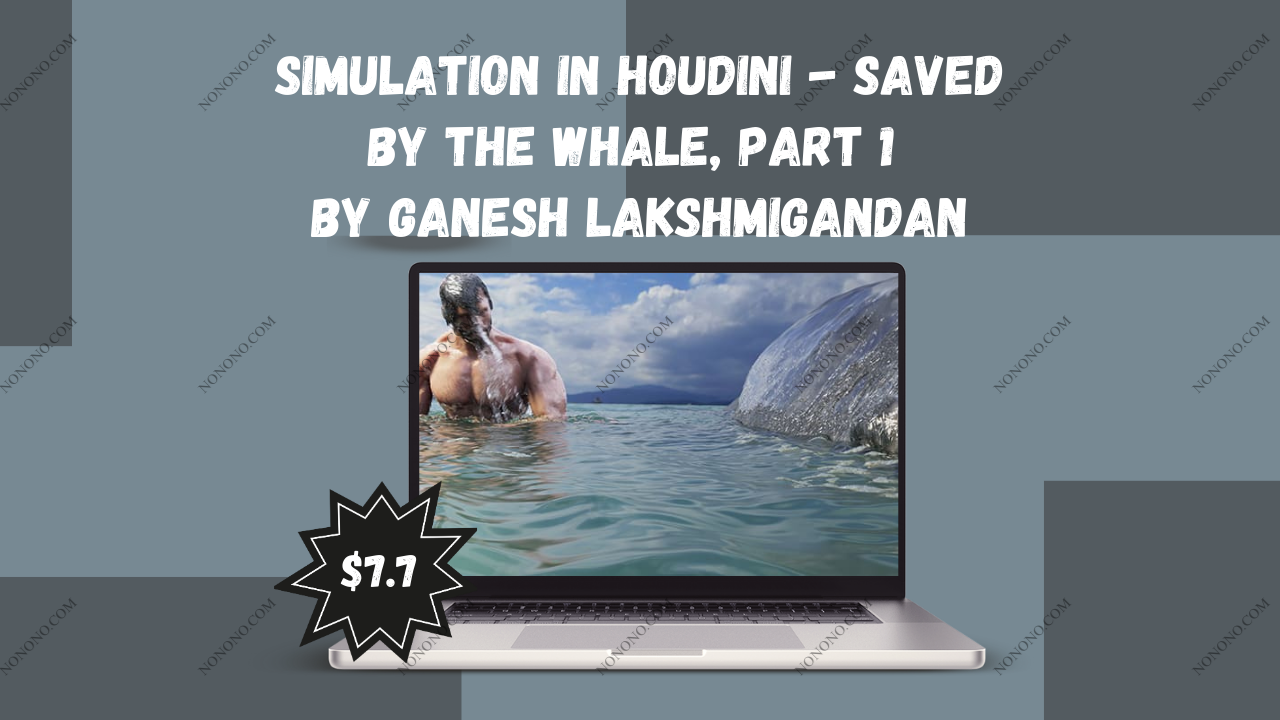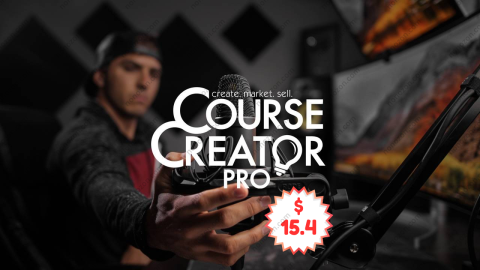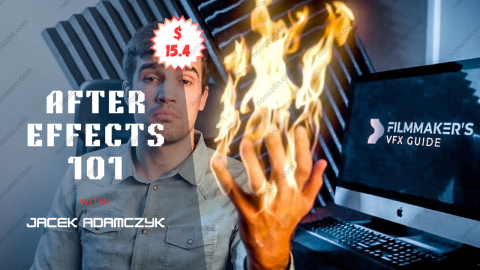Simulation in Houdini - Saved by the Whale, Part 1
by Ganesh Lakshmigandan
Simulation in Houdini - Saved by the Whale, Part 1 by Ganesh Lakshmigandan For Digital Download!
Check Proof of Content here:

Simulation in Houdini – Saved by the Whale, Part 1 by Ganesh Lakshmigandan: A Review
In the ever-evolving world of visual effects (VFX), mastery of simulation workflows is critical for creating believable and emotionally resonant visual narratives. “Simulation in Houdini – Saved by the Whale, Part 1,” led by acclaimed FX artist Ganesh Lakshmigandan, serves as a deep dive into the intricacies of water simulations, character-fluid interactions, and dynamic effects—offering students an opportunity to learn through the lens of cinematic realism inspired by Avatar: The Way of Water.
With a resume boasting credits on Avatar 2, Dune, and The Jungle Book, Lakshmigandan brings real-world insights and production-tested techniques that elevate this workshop beyond a simple tutorial—it becomes a career-shaping experience.
Workshop Overview: A Medium Close-Up Simulation Challenge
The core of the workshop is built around a medium close-up shot where a character interacts with a breaching whale, creating a dynamic collision of organic animation and fluid simulation. This scenario isn't just visually rich—it’s an ideal exercise in applied simulation that encapsulates many of the challenges faced in modern FX production.
Participants are guided through the full simulation pipeline, starting with low-resolution tests and building up to high-fidelity, production-quality assets. The course fosters a strong understanding of the physics and aesthetics of fluid simulation, while promoting experimentation and creative exploration.
Course Structure: From Fundamentals to High-End Effects
💧 Foundations of Fluid Simulation
The workshop begins with spectrum setup and low-resolution fluid simulations, allowing students to grasp core fluid behaviors in Houdini’s FLIP solver. This foundational phase familiarizes participants with:
Setting up initial ocean geometry
Simulating bulk water movement
Understanding voxel resolutions and solver settings
This segment establishes not only simulation literacy but also promotes technical intuition, an essential quality for any FX artist.
🌊 Advanced Dynamics and Custom Forces
Once the basics are in place, the course transitions into more sophisticated dynamics, including:
Custom forces to guide whale movement
Accurate collision handling for creature-fluid interaction
SDF generation and optimization
Students learn how to fine-tune fluid behavior to match animation timing and mass, emphasizing the believability of large-scale ocean motion.
🧵 Hair & Dripping Fluid Simulations (Vellum)
In a unique addition, Lakshmigandan introduces Vellum-based hair-water interactions, focusing on:
Simulating fluid running off character strands
Creating dripping effects for realism
Layering Vellum constraints with fluid sources
This section provides cross-disciplinary insight by blending character FX with environment FX, demonstrating Houdini’s versatility.
🌊 High-Resolution Surfacing and Ocean Extensions
Students then upscale their simulations to high resolution, learning how to:
Apply detailed meshing techniques using Particle Fluid Surface nodes
Integrate foam and splash elements
Extend oceans using procedural spectrum tiling and wet map creation
The realism achieved here mirrors that of cinematic productions and offers valuable portfolio material for aspiring FX artists.

Artistry Meets Technical Mastery
While the course is rich in technical knowledge, Lakshmigandan places equal emphasis on artistic direction. He teaches participants to see simulations not just as physics calculations, but as emotive storytelling tools. This dual perspective is vital in a competitive industry where visual finesse and narrative clarity must go hand in hand.
Through iterative refinement, students learn to:
Adjust timings and forces for dramatic impact
Design natural, readable splashes
Use particle and mesh blur for motion authenticity
Industry-Relevant Instruction with Real-World Perspective
What sets this course apart is Ganesh Lakshmigandan’s insider perspective. His production experiences on blockbuster films inform every step, grounding abstract concepts in practical workflows. Participants gain not only skill but also the context necessary to work in team environments, meet deadlines, and troubleshoot effectively in live production.
Real-world connections include:
Pipeline-friendly naming conventions
Simulation caching strategies
Data organization for team collaboration
These additions are often missing from beginner tutorials, but are essential for employment in studio settings.
Collaborative Learning and Community Engagement
This workshop fosters a strong sense of community learning, where participants are encouraged to ask questions, share results, and explore alternate approaches. The opportunity to connect with other creatives at similar or more advanced stages is a valuable component of the learning journey.
Who Should Take This Workshop?
This course is ideally suited for:
Intermediate Houdini users looking to specialize in simulation
Aspiring FX artists seeking portfolio-ready water interaction shots
3D generalists or animators expanding into character-fluid FX
Professionals transitioning to high-end feature work
Key Benefits of the Workshop
✅ Production-Ready Skills
Participants develop end-to-end workflows for cinematic simulation, from ocean setup to creature interaction.
✅ Art-Driven Technical Education
Ganesh's teaching style emphasizes both aesthetic judgment and technical precision.
✅ Portfolio-Quality Results
Students leave with a highly presentable water FX shot, suitable for use in demo reels and job applications.
✅ Insight into Studio Practices
Gain knowledge directly transferable to production pipelines at major studios.
Conclusion: A Launchpad for Aspiring FX Artists
“Simulation in Houdini – Saved by the Whale, Part 1” is more than just a simulation course—it’s a gateway into the world of cinematic FX. Ganesh Lakshmigandan equips participants with the skills, insight, and mindset needed to succeed in a fast-paced, highly technical industry. By the end of the course, artists will not only understand the mechanics of fluid simulation—they’ll be prepared to use those mechanics creatively and confidently in production settings.
Related products

Course Creator Pro (Preview) - Lifetime Updated
by FullTime Filmmaker Team
$15.40



